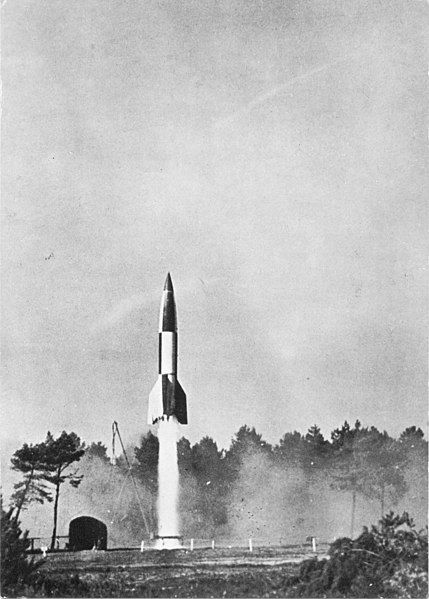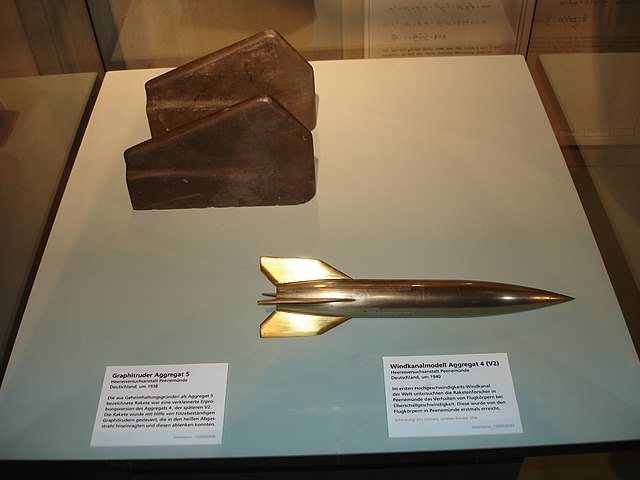Operation Backfire (World War II)
Operation Backfire was a military scientific operation during and after the Second World War that was performed mainly by British staff. The operation was designed to completely evaluate the entire V-2 rocket assembly, interrogate German personnel specialized in all phases of it, and then to test and launch missiles across the North Sea.
A German V-2 rocket fired by the British during Operation Backfire (1945)
A4-Rocket of Operation Backfire near Cuxhaven (1945)
Present day site of the V2 launch tests in the Werner forest near Cuxhaven
The V2, with the technical name Aggregat 4 (A4), was the world's first long-range guided ballistic missile. The missile, powered by a liquid-propellant rocket engine, was developed during the Second World War in Nazi Germany as a "vengeance weapon" and assigned to attack Allied cities as retaliation for the Allied bombings of German cities. The V2 rocket also became the first artificial object to travel into space by crossing the Kármán line with the vertical launch of MW 18014 on 20 June 1944.
Peenemünde Museum replica of V2
Wernher von Braun at Peenemünde Army Research Center.
Wind tunnel model of an A4 in the German Museum of Technology in Berlin.
Layout of a V2 rocket.







